PowerPoint 2016 -
Presenting Your Slide Show

PowerPoint 2016
Presenting Your Slide Show


/en/powerpoint2016/printing/content/
Once your slide show is complete, you'll need to learn how to present it to an audience. PowerPoint offers several tools and features to help make your presentation smooth, engaging, and professional.
Optional: Download our practice presentation.
Watch the video below to learn more about presenting your slide show.
Before you present your slide show, you'll need to think about the type of equipment that will be available for your presentation. Many presenters use projectors during presentations, so you might want to consider using one as well. This allows you to control and preview slides on one monitor while presenting them to an audience on another screen.
There are several ways you can begin your presentation:
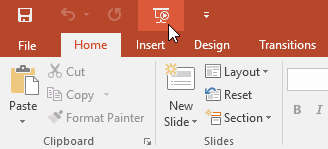


You can advance to the next slide by clicking your mouse or pressing the spacebar on your keyboard. Alternatively, you can use or arrow keys on your keyboard to move forward or backward through the presentation.
You can also hover your mouse over the bottom-left and click the arrows to move forward or backward.

You can exit presentation mode by pressing the Esc key on your keyboard. Alternatively, you can click the Slide Show Options button in the bottom-left and select End Show.
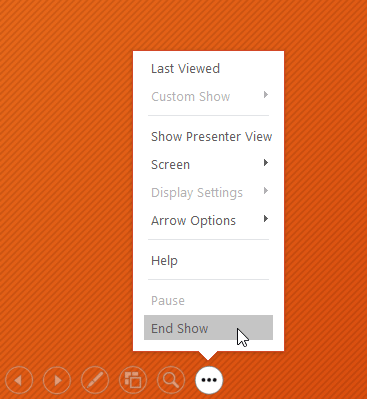
The presentation will also end after the last slide. You can click the mouse or press the spacebar to return to Normal view.

PowerPoint provides convenient tools you can use while presenting your slide show. For example, you can change your mouse pointer to a pen or highlighter to draw attention to items in your slides. In addition, you can jump around to slides in your presentation or access other programs from your taskbar if needed.
Sometimes you may need to access the Internet or other files and programs on your computer during your presentation. PowerPoint allows you to access your taskbar without ending the presentation.
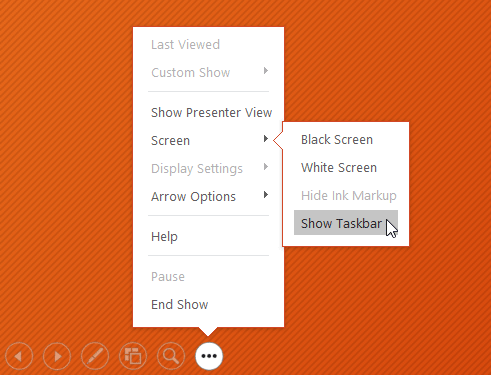
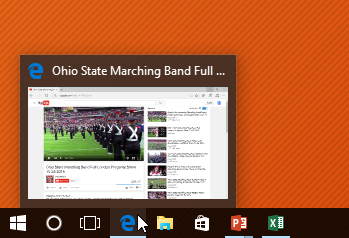
You can also access any of the menu items above by right-clicking anywhere on the screen during your slide show.
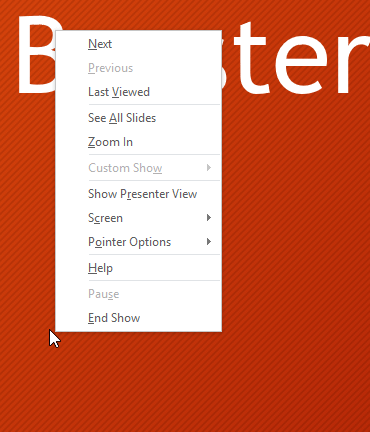
You can jump to slides out of order if needed.

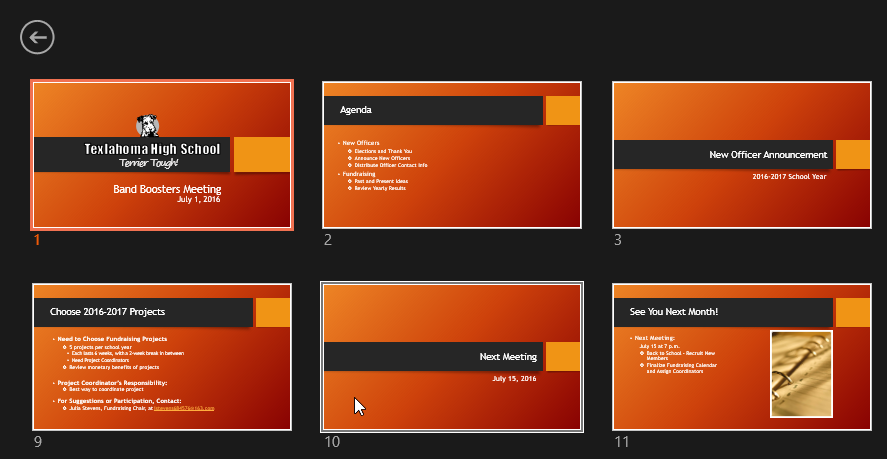
Your mouse pointer can act as pen or highlighter to draw attention to items in your slides.
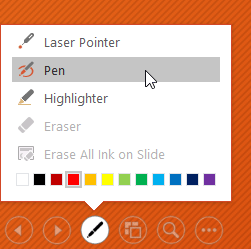
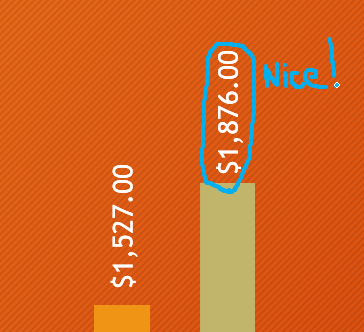
You can also use the laser pointer feature to draw attention to certain parts of your slide. Unlike the pen and highlighter, the laser pointer will not leave markings on your slides. To use the laser pointer, select it from Pen Tools, or press and hold the Ctrl key and the left mouse button.
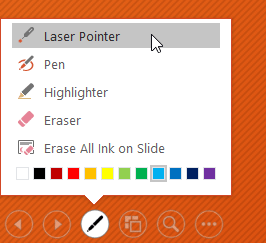
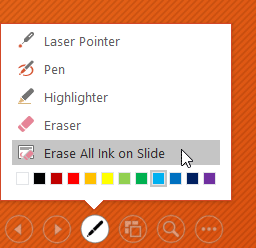
When you end a slide show, you'll also have the option to Keep or Discard any ink annotations made during your presentation. If you keep ink markings, they'll appear as objects on your slides in Normal view.
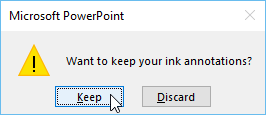
If you're presenting your slide show with a second display—like a projector—you can use Presenter view. Presenter view gives you access to a special set of controls on your screen that the audience won't see, allowing you to easily reference slide notes, preview the upcoming slide, and much more.
Start your slide show as you normally would, then click the Slide Options button and select Presenter View. Alternatively, you can press Alt+F5 on your keyboard to start the slide show in Presenter view.
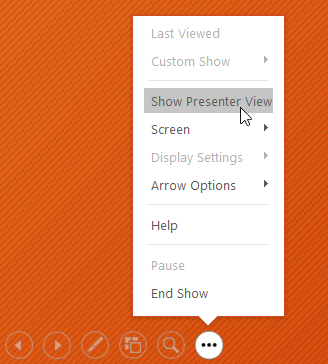
Click the buttons in the interactive below to learn more about using Presenter view.
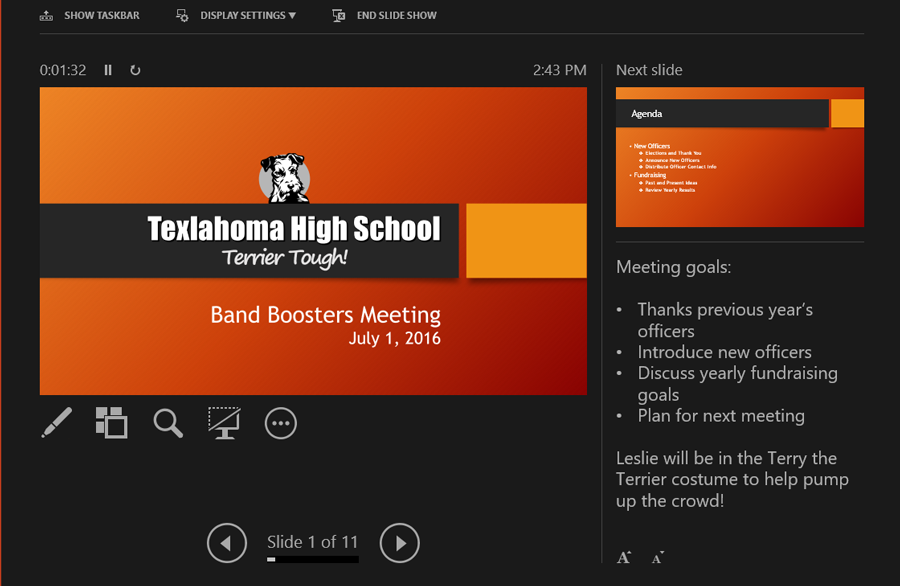
PowerPoint has various options for setting up and playing a slide show. For example, you can set up an unattended presentation that can be displayed at a kiosk and make your slide show repeat with continuous looping.

Click the buttons in the interactive below to learn about various options for setting up and playing a slide show.
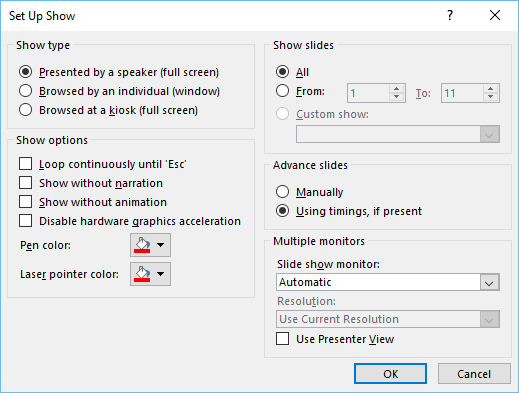
If you have more than one monitor, you can choose which one to display the slide show on. It's usually best to leave this setting on Automatic.
To advance slides automatically, you'll need to customize the slide timing on the Transitions tab. Review our lesson on Applying Transitions to learn how.

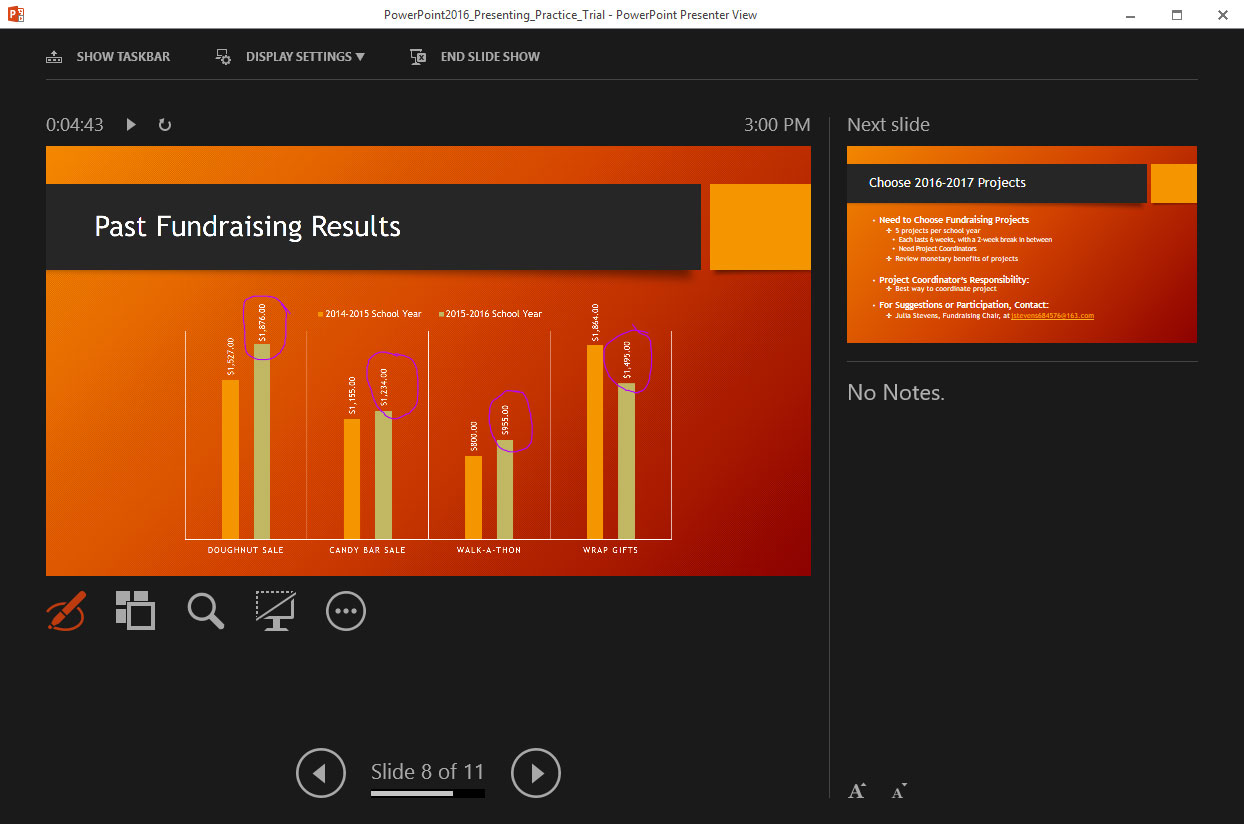
/en/powerpoint2016/lists/content/